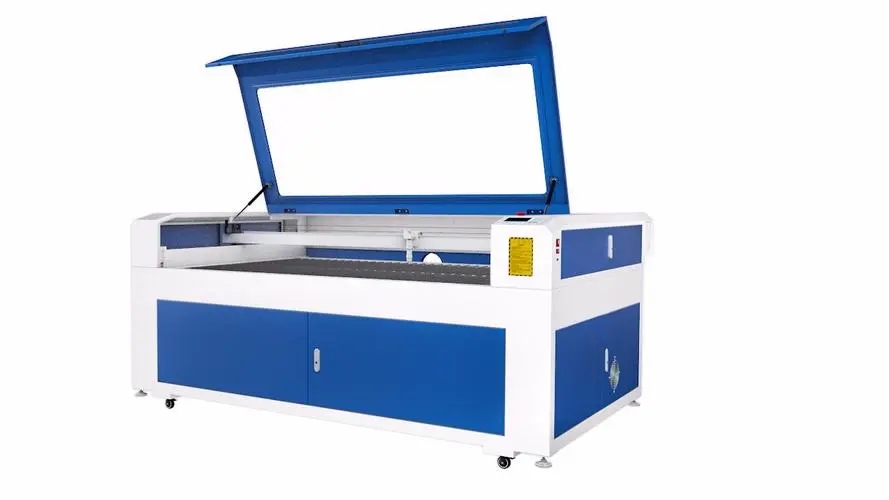Do Laser Cutters Leave Wood with a Distinct Smell? Unmasking the Mystery!
Introduction
Laser cutting has become an increasingly popular method for creating precise and intricate designs on various materials, including wood. As more individuals and businesses adopt laser cutters for their cutting needs, questions about the process and its potential impact on materials arise. One such question that often surfaces is whether laser cutters leave wood with a distinct smell. In this article, we will delve into this mystery, examine the factors that contribute to any potential smell, and determine how it can be minimized or eliminated.
Factors Influencing the Smell
When wood is cut using a laser, it undergoes a process called combustion. The laser beam heats up the material, causing it to vaporize and create a kerf, or a narrow cut, in the wood. The combustion process releases gasses and fumes that contribute to the characteristic smell associated with laser cutting. However, not all types of wood produce the same smell, and the intensity of the smell can also vary.
The primary factors that influence the smell left by laser cutters on wood include:
1. Wood Type
Each type of wood has its own unique properties and chemical composition, which influence the scent it emits when subjected to laser cutting. Woods such as cedar and pine, which contain resin, tend to produce a stronger and more distinct smell compared to hardwoods like oak or maple.
2. Moisture Content
The moisture content of the wood also plays a role in the resulting smell. Wood with higher moisture content tends to release more steam during laser cutting, which can dilute the odors. Dry wood, on the other hand, may produce a stronger smell due to the absence of significant steam release.
3. Laser Power and Speed
The laser power and speed settings used during cutting sessions can impact the smell left on the wood. Higher power settings may result in more pronounced smells, while lower power settings can minimize odors. Similarly, slower cutting speeds can contribute to a stronger smell compared to faster cutting speeds.
Minimizing or Eliminating the Smell
If you find the smell left by laser cutting wood to be unpleasant or excessive, there are several measures you can take to minimize or eliminate it. These include:
1. Proper Ventilation
Adequate ventilation is essential to dissipate the fumes and odors released during laser cutting. Ensure that your workspace has proper ventilation, such as exhaust fans or ducts, to redirect the fumes outside or filter them through air purifiers.
2. Material Preparation
Properly preparing the wood before laser cutting can also help reduce the smell. Seasoned or kiln-dried wood tends to produce less odor compared to freshly cut or green wood, which contains higher moisture content. Additionally, removing any resinous portions or knots from the wood can minimize the smell.
3. Choosing the Right Wood
If smell is a major concern, selecting a wood species that emits a milder scent can be beneficial. Hardwoods like birch, cherry, or walnut generally produce less noticeable smells compared to softwoods like spruce or pine.
4. Adjusting Laser Settings
Experimenting with laser power, speed, and frequency settings can also help reduce the smell. Lowering the power and increasing the cutting speed can reduce the intensity of fumes and subsequently lessen the smell left on the wood.
FAQs
Q: Is the smell left by laser cutting harmful?
A: While the smell produced during laser cutting may be unpleasant, it is generally not harmful. However, it is important to ensure proper ventilation to avoid inhaling excessive fumes.
Q: Can the smell be removed completely?
A: Completely eliminating the smell may be challenging, as it is an inherent byproduct of the laser cutting process. However, following the aforementioned steps can significantly reduce the smell left on the wood.
Q: How long does the smell linger?
A: The duration for which the smell lingers can vary depending on factors such as wood type, laser settings, and ventilation. In most cases, the smell dissipates within a few hours to a couple of days. Proper ventilation can help speed up the process.
Q: Are there any health risks associated with laser cutting odor?
A: The smell itself is not typically associated with significant health risks. However, prolonged exposure to fumes or inadequate ventilation can be detrimental to one’s health. It is advisable to work in a properly ventilated area or wear appropriate masks when dealing with intense odors or dust particles.
Q: Can the smell affect the quality of the laser-cut wood?
A: The smell left behind by laser cutting does not impact the overall quality of the wood. The aroma dissipates over time and does not affect the structural integrity or appearance of the finished laser-cut products.
Conclusion
Laser cutters can indeed leave wood with a distinct smell, which can vary based on factors such as wood type, moisture content, and laser settings. However, there are numerous precautions and adjustments that can be implemented to minimize or eliminate the smell, making laser cutting a more pleasant experience. With proper ventilation, careful wood selection, and adjusting the laser settings, the smell left on wood can be significantly reduced, allowing for an enjoyable laser cutting process with minimal olfactory impact.





